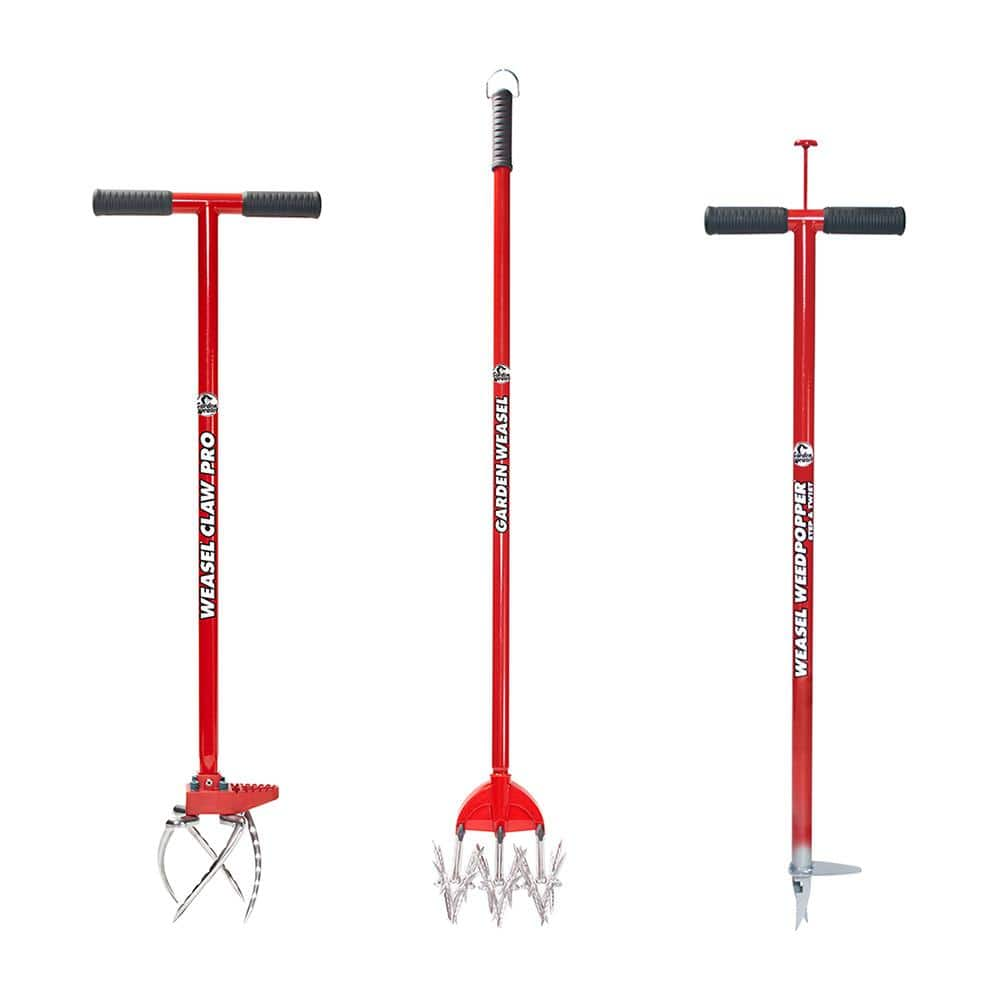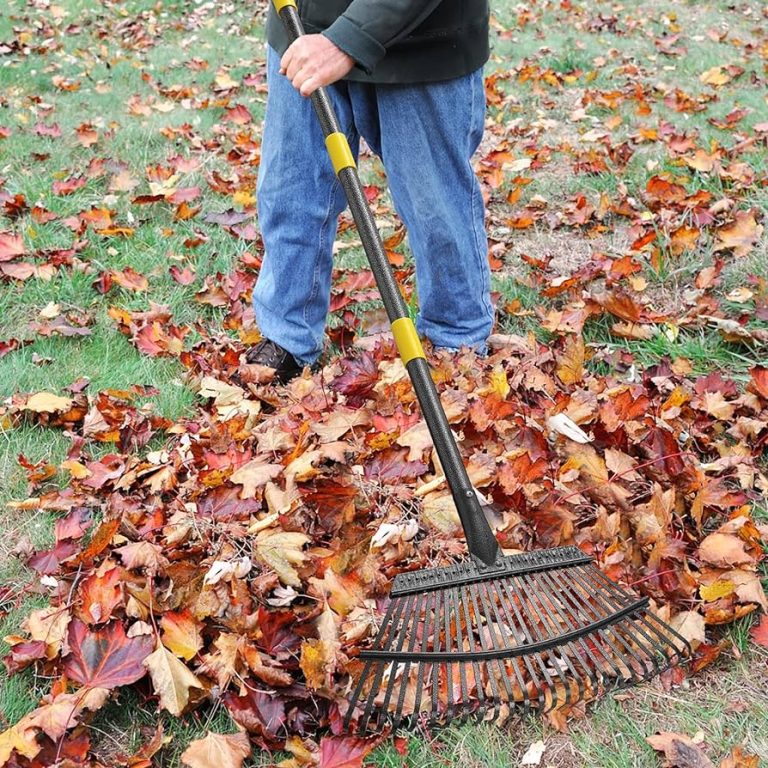Garden Claw Tool
The Garden Claw: A Game-Changing Tool for Growers
The garden claw tool represents an ingenious hybrid tool design. This deceptively simple implement combines the best attributes of a hand trowel and a sturdy rake. Claws leverage serrated tines to effortlessly claw through tough soils and tangled roots.
Basic garden claws feature a curved head with sharpened tines. A D-shaped ring forms a comfortable thumb grip for added leverage. This minimalist form packs maximum utility into an ergonomic, lightweight package.
While lesser-known than traditional gardening standbys, the claw cultivates a devoted following. Aficionados praise this quirky tool’s muscle for backbreaking tasks. From root extraction to soil prep, claws prove indispensable workhorses in landscapes and gardens.
Roots Fear the Garden Claw
Removing tenacious weeds and stubborn root systems ranks among the most grueling gardening chores. The claw specializes in dismantling sinewy root masses with surgical precision.
Claws cleanly sever roots and loosen soil like a sharpened axe through timber. The tines’ sharp serrations slice roots while leveraging minimal user effort. Even deep-set taproots succumb to steady claw attacks.
Tough vegetation like dandelions and ivy meet their match against claws. The claw’s curved head provides an angled approach to expose and pry out subsurface root balls whole. This avoids fragmenting invasive plants to respread.
Beyond weeding, claws also revive overgrown, root-bound pots and containers. The tines comb through root masses to liberate cramped rootscapes. Plants transplant better after claw root pruning dethatchings.

Soil Preparation Made Simple
Empowered with versatile garden claws, growers gain distinct advantages prepping planting beds. The claw’s unique shape tackles key soil cultivation tasks better than ordinary tools.
Claws pulverize dirt clods and aggregated soil particles into smooth, friable mixes. Their curved tines provide leverage to forcefully break apart dense soil. The serrations cut and aerate root-rich earth like pastry blenders.
The tines also sift and blend amendments like compost, manure, or peat moss into planting beds evenly. Gardeners make fewer passes mixing ingredients versus shovels and rakes alone.
When creating divots or furrows for seeding, claws carve crisp lines in prepared soil. The sharp tines etch tidy trenches with defined edges. This precision planting reduces wasted seeds scattered unevenly.
Garden Claws Access Tight Spaces
One unique advantage of claws involves their ability to reach cramped areas. The compact tool heads effortlessly navigate tight quarters traditional tools cannot.
Between closely planted crops, claws cultivate with precision. The curved tine heads extend reach to prune and weed while avoiding plant damage. Claws dislodge deep, matted root systems without excessive disruption.
Garden claws maximize productivity from raised beds, planters, and other confined spaces. The small tools slice through soil vertically to aerate without disturbing roots horizontally near walls.
Claws also allow thorough detailing and touchups on hardscaping features. The tines fit along edging materials to weed crevices and redefine crisp boundaries. Any stray grass or weeds stand no chance against probing claws.

The Claw Outperforms Other Hand Tools
While labor-intensive, hand tools remain critical gardening implements. Tools that extend the body’s capabilities multiply the force and effects of each swing.
Garden claws outshine most traditional hand tools for many common tasks. The specialized tined design combines the functionality of a hand trowel, cultivator, and rigid-tined hand rake into one compact form.
Versus hand trowels, claws provide extra leverage to pry out obstinate roots or break compacted earth. Their elongated grips keep palms off soiled surfaces while working.
When compared to curved hand rakes, claw tines prove far more adept at digging. Rakes only displace topsoil whereas claws penetrate deep into underlying dirt layers.
Basic hoes and cultivator tools underperform for tough root extraction jobs too. Claw tines lock into roots more effectively with their sharpened serrations. They don’t merely shear vegetation from the surface.
The Best Claw Design Features
While all claws share common design traits, some variations enhance performance. Top claw models incorporate these optimal features for maximum utility and ergonomics.
Quality claws use durable materials like hardened aluminum or stainless steel to resist bending and abrasion. Both head and grip components should prove impervious to outdoor elements over time.
Elongated claw shafts improve leverage and comfort versus compact trowel styles. Extended reach lets users apply more force with less bending strain. Shafts 12 inches or longer promote good posture.
Grips should provide secure, slip-resistant traction for muddy conditions. Rubberized grips conform to hand contours better than plastic alone. Wide, raised treads boost grasp on the tool’s pulling end.
Sharp, properly spaced tines inflict the most damage on roots and soil. Aggressive, pointed serrations shear through subterranean masses efficiently. Ideal spacing allows tines to bind into targets.

How to Use Garden Claws for Maximum Impact
Seasoned gardeners wield claws with proper techniques to exert maximum pressure. Their full-body motions leverage the utmost strength behind each stab.
When attacking subterranean root systems, timing matters. Periodically waiting for soil to dry somewhat prevents root networks from slipping free undisturbed. Claws achieve better traction in friable, non-muddy dirt.
Users should plant feet wide and bend at the knees while plunging claws in low arcs. Pushing down powerfully through core engagement concentrates intense pressure on tine tips.
Gradual back-and-forth rocking motions expose more root sections to slice. The curved claw heads prevent stuck straight-down insertions. Shifting the arc of entry dislodges masses piece-by-piece.
Clawing in contained shrinking circles targets complete root ball extractions. Start wider then spiral inward while pulling up bound vegetation with each pass. This systematic approach eventually unearths root systems whole.
The Perfect Claw for Different Gardens and Growers
Diverse claw designs cater to various gardens’ demands and users’ gripping strengths. Manufacturers produce claws tailored to different scales and applications.
Full-sized claws built for power suit most vegetable beds and long landscape rows. Their substantial length and leverage generates extreme force from above and below ground.
Compact claw styles sacrifice some power for maneuverability in tight confines. Smaller circumferences navigate cramped ornamental beds or patio containers deftly. These lightweight claws place less strain on hands and wrists.
Gardeners with arthritis or limited gripping ability benefit from claws with oversized, sculptured grips. Built-in ergonomics reduce grip fatigue and improve comfort without sacrificing performance.
Partial claw heads built into tool heads serve handymen and landscapers too. Integrated claws enhance equipment like shovels and pulaskis by assisting with root-bound clump dislodging or debris clearing.

Garden Claws for Kids and Classrooms
Garden claws make ideal kid-sized tools to engage young green thumbs. Lightweight, miniaturized claws suit small hands while teaching proper use from day one.
Claws provide the perfect introduction to digging and cultivating for youngsters. The tools’ ease-of-use avoids frustration while building confidence to tackle “grown-up” garden chores successfully.
Classrooms deploy claws as must-have teaching tools for hands-on gardening lessons too. Durable designs withstand heavy use with guidance on preparation techniques. Young learners experience the satisfaction of unearthing root systems without overtaxing.
Involving children with claws also promotes environmental education early. Kids build connections to plants and soil through intimate hands-on engagement. They develop intuitive senses about why over-tilling disrupts delicate root environments.

Conclusion
The Garden Claw tool is a popular and versatile gardening tool that is designed to help with tasks such as tilling, cultivating, and aerating the soil in your garden. It consists of a sturdy handle attached to several metal tines that resemble claws.
The design of the Garden Claw allows for easy gripping and twisting motions, making it efficient in breaking up compacted soil and removing weeds. The tines of the tool are typically made of hardened steel or other durable materials, ensuring they can withstand the pressure and strain of heavy-duty use.
Using the Garden Claw is relatively simple. You insert the tines into the soil and then twist the handle from side to side. This motion helps to loosen the soil, allowing for better drainage and root growth. It is particularly useful in preparing garden beds before planting, as well as for maintaining the soil’s health throughout the growing season.
In addition to its primary function of tilling and aerating the soil, the Garden Claw can also be used for other gardening tasks. It can help to incorporate compost or other organic matter into the soil, mix in fertilizers, and even dig small holes for planting new plants or bulbs. Some Garden Claws even come with additional attachments or features, like detachable tines or extended handles, to further enhance their versatility and functionality.
The Claw Garden tool is appreciated by gardeners of all levels of experience for its effectiveness and ease of use in 2024. It can save time and effort in maintaining a healthy garden by promoting better soil quality and preventing weed growth. Its durable construction ensures that it can be a reliable companion for many gardening seasons to come.

